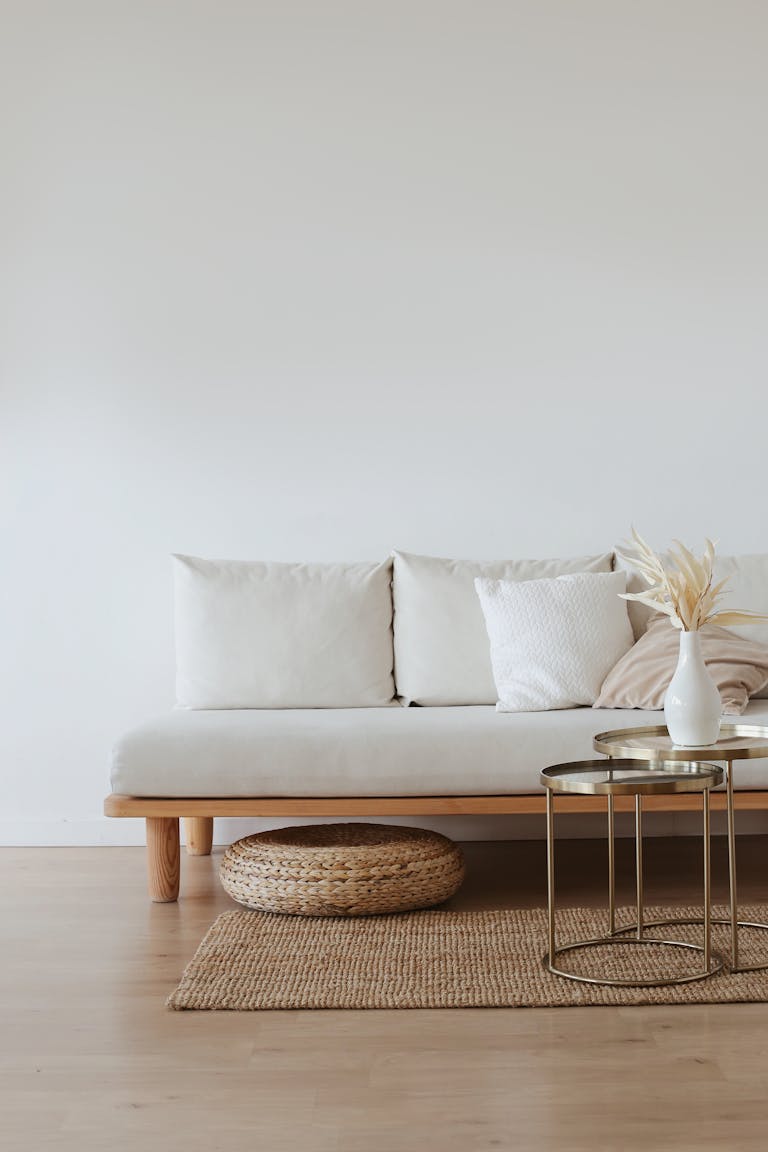This post is about how minimalism can help you save money and live with less stress.

Adopting a minimalist lifestyle can actually help you save money while improving your overall quality of life. If you’re tired of clutter, debt, and feeling overwhelmed by stuff, minimalism offers a fresh approach. This article will explore how simplifying your life and embracing minimalism can lead to significant financial savings, along with practical tips to get started.
1. Understanding Minimalism and Its Impact on Spending
At its core, minimalism isn’t about depriving yourself—it’s about making intentional choices that align with your values and priorities. By focusing on what truly matters, you naturally reduce unnecessary spending. Instead of purchasing items out of habit or impulse, you’ll become more mindful of your purchases, choosing only what enhances your life. By living a life of minimalism, you can save money like never before and finally live a life with less stress.
Why it saves money:
Minimalism helps you stop buying things you don’t need, thus cutting down on impulse purchases and reducing the need for constant shopping sprees. Do you go into stores and find something you weren’t looking for just to end up buying it? We’ve all been there – I was really bad about it for a while. To avoid this, create list of what you need and stick to it.
2. Cutting Down on Clutter and Reducing Unnecessary Purchases
One of the first steps in embracing minimalism is decluttering. As you go through your possessions, you’ll likely discover items you’ve forgotten about, duplicates, or things you no longer use. Selling or donating items you no longer need can generate extra cash or help you avoid replacing things you already own.
How it saves money:
By getting rid of excess items, you won’t feel the urge to continually buy replacements or duplicates. Plus, decluttering can free up space in your home, allowing for more efficient living.
3. Buying Quality Over Quantity
Minimalism encourages investing in fewer, but higher-quality items that last longer. Instead of buying cheap products that break or wear out quickly, minimalists focus on durability and timelessness. For example, investing in well-made clothing, appliances, or furniture can save you money in the long run, as you won’t need to replace them as often.
Why it saves money:
Though high-quality items may come with a higher upfront cost, they can save you money over time by reducing the need for frequent replacements. Some examples could include unnecessary clothing and shoes, makeup, cheap furniture or appliances (you’ll have to replace them more often and sooner, leading to more money overtime), etc.)
4. Focusing on Experiences, Not Things
Minimalism isn’t just about what you don’t buy—it’s about what you value. Many minimalists choose to invest in experiences rather than physical possessions. Travel, outdoor adventures, or time spent with loved ones can create lasting memories that don’t require spending a lot of money on material goods.
How it saves money:
By prioritizing experiences, you may find yourself spending less on things and focusing more on activities that don’t require constant purchasing. This can help you eliminate unnecessary consumption, junk, and stress.
5. Reducing Monthly Subscriptions and Services
A common area where many people overspend is on subscriptions and memberships – Netflix, YouTube, Spotify, etc.. Whether it’s streaming services, gym memberships, or magazine subscriptions, these recurring costs can add up quickly. Minimalism encourages a review of your regular expenses to determine what truly adds value to your life. For me, I used to pay to have my nails done every two weeks, usually costing me around $40.00-$45.00. I’ve resorted to only getting my nails done for special events to save money – plus it’s healthier for not only my nails but I’m sure my overall health. The chemicals cannot be good for regular inhalation.
How it saves money:
By cutting out subscriptions or services you don’t regularly use or need, you can significantly reduce your monthly spending and save more! Use that extra money towards a fun family trip or romantic night out.
6. Avoiding the Pressure of Social Media and Marketing
Minimalism helps you detach from the constant pressure to keep up with trends or display wealth. Social media platforms often highlight the latest gadgets, fashion, and lifestyles, which can create a sense of inadequacy or a desire to buy more. The next time you see the “it” bag, or the “must have” shoes, think a little harder before you buy them. Are they benefiting you? Are they actually worth all of the money they cost? Minimalists focus on authenticity and less on the “newest” and “best” trends.
How it saves money:
By resisting the urge to buy into the latest trends promoted online, you can focus on your needs and avoid making impulse purchases that drain your bank account. If there’s something you just can’t live without, save up for it and get it at the end of the month or even the end of the year!
7. Simplifying Your Finances and Budgeting
Living minimally can also streamline your finances. With fewer expenses, less debt, and fewer things to manage, budgeting becomes much easier. Many minimalists opt for a simpler financial structure that helps them save, invest, and live within their means.
How it saves money:
By simplifying your life and finances, you can better manage your savings, prioritize spending, and reduce financial stress.
Living with less doesn’t mean sacrificing your happiness or lifestyle—it’s about making intentional choices that bring you peace and financial freedom. By embracing minimalism, you can save money, reduce clutter, and focus on what truly matters. Whether it’s through mindful purchases, eliminating subscriptions, or focusing on experiences, minimalism offers a practical approach to saving money while living a more fulfilling life. Start small, declutter your home, and see how living with less can lead to more savings and a simplified, stress-free life.






